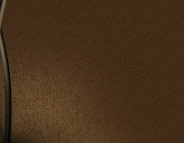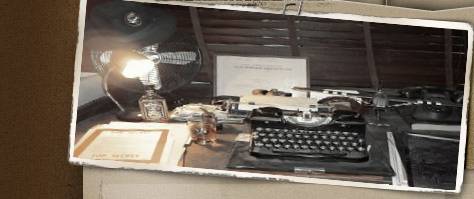|
REASON FOR INVESTIGATION
This investigation was initiated
after it was understood that the
location where Medal of Honor
recipient
Lieutenant-Colonel Robert G. Cole,
battalion commander in the 502nd
Parachute Infantry Regiment, was
Killed In Action on September 18th,
1944 is not well known among the
general public.
SYNOPSIS:
On the second day of Operation
Market Garden, Colonel Cole was
Killed in Action in a field near the
town of Best in The Netherlands.
This field borders the edge of the
Zonsche Forest and lies in the
corner of a dirt road named
Schietbaan Laan and the road from
Best to Son through the Zonsche
Forest. At present, indentations of
various sizes and depths, traces of
foxholes of Cole and his men, can
still be found in the forest floor
in the tree line next to this field.
DETAILS:
Robert G. Cole was born March 19,
1915 it Fort Sam Houston, Texas.

March 19th: Col.
Cole's Birthday
Robert Cole graduated from West
Point (The United States Military
Academy) in 1939.
(Click on the image
to enlarge)
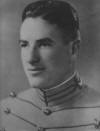
Cadet Cole, Class of
1939
Cole was assigned commander of third
battalion of the 502nd Parachute
Infantry Regiment. This regiment was
part of the 101st Airborne Division.
During the division’s first combat
mission, in Normandy, Cole was
ordered to attack and capture the
French town of Carentan on the 10th
of June 1944.
The battalion spearheaded the attack
which involved the whole regiment.
The advance into Carentan ran across
a causeway leading from a location
south from the town of Sainte-Côme-du-Mont
(nicknamed “Dead Man’s Corner”) in
southern direction. The battalion
had to cross four bridges before
reaching the outskirts of Carentan.
The men were under constant enemy
fire. Because the enemy had flooded
the fields on both sides of the
causeways, there was hardly any
cover for the advancing
paratroopers. The battalion suffered
heavy casualties and the road was
nicknamed “Purple Heart Lane.” When
the lead elements of the battalion
had crossed the last bridge and had
reached a field South West of the
bridge in the early hours of June
11th, Colonel Cole ordered his men
to fix bayonets and follow him
toward a farm owned by the Ingouf
family.
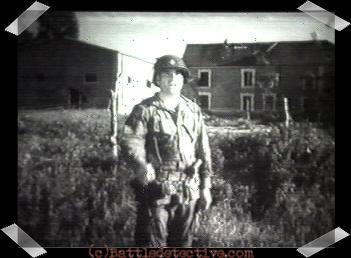
Still image from a US
army Signal Corps film of an
interview with
Lt.-Col. Cole in
front of the Ingouf Farm in Carentan,
France
This attack stopped part of the
murderous fire on the rest of the
battalion, allowing the men to
establish a defensive position on
the outskirts of Carentan to be used
as a jump-off point for a subsequent
attack into town.
For his actions, Lt-Col. Cole was
awarded the Medal of Honor. It was
awarded to him posthumously though,
because of his death in Holland on
the 18th of September of that same
year.
This is the citation of Lt-Col.
Cole’s Medal of Honor:
(Click on the image
to enlarge)

On that 18th of September 1944,
Cole’s third battalion found itself
in the woods between the towns of
Best and Son. The men were receiving
fire from three sides.

Situation Map of the
Companies in 2nd and 3rd Battalions
of the 502nd Regiment on September
18th, 1944
These are some accounts of that
day’s actions and of Colonel Cole’s
tragic death:
EARLY on the second morning of the
fight at Best, Colonel John T.
Michaelis, commanding 502nd
Regiment, came from Zon to the
Zonsche Forest where Lieutenant
Colonel “Bob” Cole had bivouacked
Third Battalion, looked the scene
over, and decided that he had better
commit his Second Battalion on
Cole’s right flank in an effort to
clean up the fight and free Cole’s
forces.
[…]
[Cole’s] withdrawal to the deep wood
had been accepted by the Germans as
an invitation to filter back through
the western tree line. Their snipers
kept him between a chill and a
sweat. He could not tighten his
lines to the point where all
companies were well contained on
account of the constant artillery
fire. He could not loosen them more
than was already done because the
enemy was coming by twos and threes
into his lines, as now organized.
A strong and persistent force worked
into the ground between Companies G
and H, and both companies began to
lose men from close-up rifle fire.
Cole called to Regiment to see if he
could get air support against the
Germans who were coming across the
highway and into the woods. The he
left his fox hole to apprise Stopka
of what he had done. In his absence,
a shell landed next to the hole, and
a part of exploded through the skull
of Cole’s radio operator. Cole was
wiping the blood and brains from the
radio when Stopka came by a few
minutes later to tell him that some
P-47’s were coming over. Fortunately
the radio still working.
By this time enemy snipers were
firing directly on the CP and the
Battalion had become almost inert.
Cole shouted to his men but most of
them would not leave the foxholes to
take countermeasures. Mortar and
artillery fire, though as great a
danger to the Germans in the woods
as to Cole’s men, seemed to harass
only the one side. What seemed at
first only random sniper fire had
now the proportions of a
counterattack.
The P-47’s came low to strafe. Their
bullet fire began to rake the
Battalion position in the woods.
Stopka went running to get the men
busy with panels; the had to be
improvise the panels on the spot out
of orange flags. A call came over
the radio for Stopka; Cole sent for
him and then went out to take over
the work which Stopka had been
doing.
He got the job almost completed. The
P-47’s began to find the enemy lines
with their strafing attack, and
there was a sudden and notable
let-down in the volume of enemy fire
from beyond the highway. Cole walked
out in front of his men and beyond
the woods. For a brief period, he
stood there deliberately in the
open, with his hand shielding his
eyes, looking up at a circling
plane.
Then a sniper’s bullet from a house
100 yards away hit him through the
temple and he died instantly. It was
the not-unexpected ending for a
young leader, Texas born and West
Point educated, who had won the
Congressional Medal in the fight at
Carentan and had continued to set
for his battalion an example of
personal bravery which was
frequently at odds with any
well-rounded concept of his
administrative responsibilities.
Lieutenant Ralph A. Watson was a few
paces in rear of Cole when he was
shot. Such was the emotional hold
which Cole had on many of his men
that young Watson couldn’t make
himself phrase the words: “Cole is
dead.” So to Stopka he sent only
this word by messenger: “You are in
command of the Battalion.” Stopka
worked on for another hour, thinking
it was only a temporary matter.
A German ran from the corner of the
house where the sniper had fired on
Cole. A Battalion machine gun cut
him down in mid-flight. Though
nobody could be sure about the
matter, the word was passed from
foxhole to foxhole that the
Battalion had finished the man who
had killed Cole. That made everyone
feel better.
- S.L.A. Marshall,
Battle at Best, 1944 Pages 22-26 -
Almost as a last resort Colonel
Cole called for air support. The
P-47s came in low, and began to
strafe his own battalion positions.
He hastened out to direct the laying
of identification panels. The P-47s
began hitting the enemy lines and
fire from the Germans along the
highway slackened. Colonel Cole
walked out in front of his men and
beyond the woods, stood there for a
few second with his hand shielding
his eyes, looking up a circling
plane. Suddenly a sniper’s bullet
from a house a hundred yards away
hit him through the temple. He died
instantly.
- Leonard Rapport & Arthur
Northwood, Jr. Rendezvous With
Destiny, 1948
Pages 291-292 -
Responding to regimental S-2
Sergeant Graham Armstrong’s query as
to the status of the highway bridge
south of Best, Cole had matters of
more importance at the moment. PFC
Richard Ladd, who had been in the
company of Sgt. Armstrong, described
the scene: “Undoubtedly due to the
exigency of his battalion’s
situation (enemy fire from almost
three sides and the sudden impromptu
strafing by U.S. Air Force P-47’s)
Cole exclaimed, ‘To hell with the
bridge!’ or stronger words to that
effect. Almost simultaneously, he
leaped out of his foxhole and ran
several yards out into an open area
to more effectively display an
orange parachute panel for
recognition by the fighter bombers.
He was struck down at that moment by
a German bullet. The was possibly
the most devastating rifle shot of
the was for the 502nd.
- George Koskimaki “Hell’s Highway,
1989, Page 146-
During the afternoon of the 18th,
the 3rd Battalion remained in
position near the objective, denying
the enemy the use of the bridges
over the Wilhelmina Canal and the
main highway to Eindhoven from Best.
The battalion forced back two more
limited scale attacks by the enemy.
At 1130 hours, during a heavy attack
by the enemy on the battalion
position, five P-47’s arrived just
as the situation was becoming
critical. Panels and orange smoke
were displayed to identify the enemy
lines. Following this action,
aircraft strafed and bombed the
enemy at very close quarters as the
enemy had advanced to within one
hundred yards of our battalion
lines. This support, which was the
first that the battalion had
received, resulted in the enemy
attack being repulsed with heavy
losses in troops and equipment. At
1430 hours, during the strafing and
bombing, the battalion commander was
killed by rifle fire while observing
the enemy from the battalion
observation post, located near the
front lines.
- 502nd Parachute Infantry Regiment,
Unit After Action Report of D+1
Operation Market Garden. -

CONCLUSIONS:
Battle detective and combat scene
archeologist John de Neef explained
where the exact location of Cole’s
death must have been. About fifteen
years ago, John was walking in the
Zonsche Forest with his metal
detector. Near the field, of which
we now know that Cole died there,
John talked to some local elderly
men; brothers. They had some horses
in a pasture nearby. These brothers
told John that Cole was killed in
the field near the road close, to a
small electrical power station.
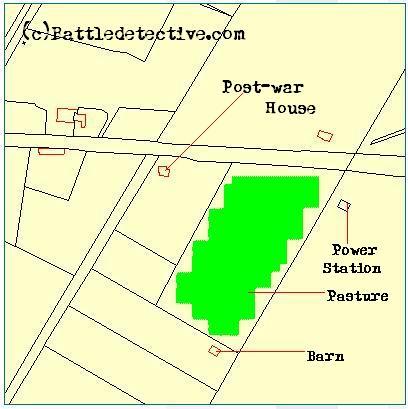
The men gave John a black and
white photograph of the house or
farm building where they thought the sniper must
have been. The house has been
demolished years ago. John does not
have the picture of the house anymore.
John had been researching the tree
line along Schietbaan Laan and had
found several battle artifacts
there. On that location, even today,
indentations and shallow pits in the
forest floor are proof of the
presence of the men of Third
Battalion who had dug in there.
(Click on the images
to enlarge)
|





